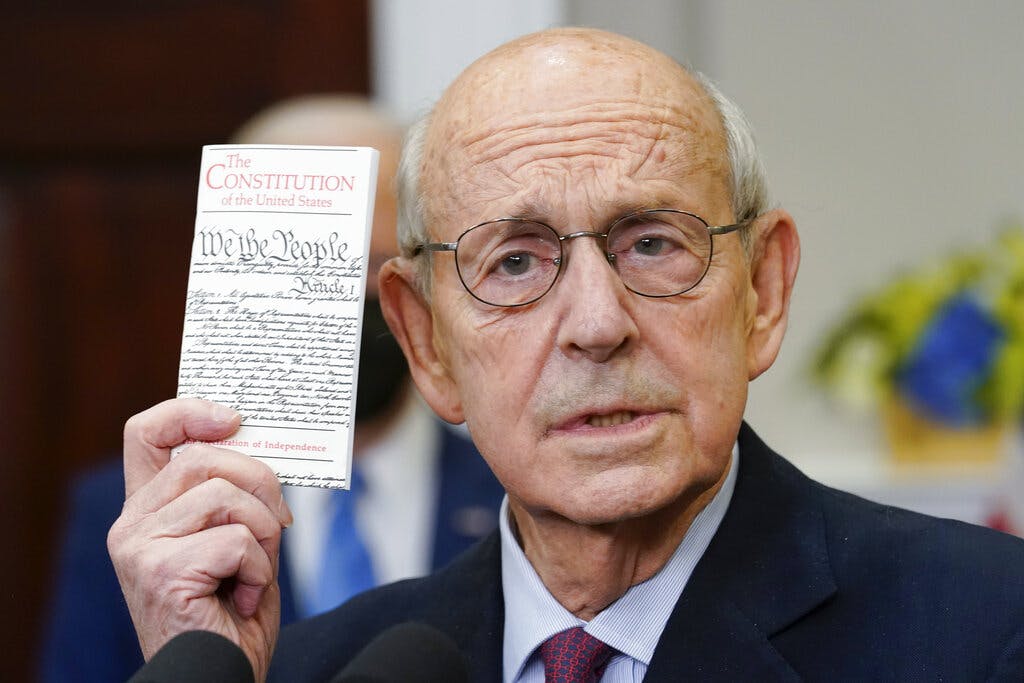At Harvard, Breyer Muses on End of Life Tenure for Supreme Court Justices
The one-time justice thinks it would be ‘fine’ to mandate term limits for high court jurists.

Justice Stephen Breyer’s time on the Supreme Court may have come to an end after 28 years — he resigned at the height of his powers while his fellow Democrats were openly urging him to open the way for a younger liberal — but he is far from done thinking about how long other justices should serve.
In comments made at Harvard’s Institute of Politics, the jaunty octogenarian commented that “you don’t want someone in that job to be thinking about ‘What is my next job?’ But if you had a long, definite term — like most countries have some kind of definite term — it would be fine.”
Those remarks were reported by the Harvard Crimson. In signaling that he sees no “real problem” to altering life tenure for justices, Justice Breyer joined his voice to the growing chorus of those on the left seeking to reform the court. In an aside, he noted that early retirement would have saved him “a lot of angst.” Justice Breyer now teaches administrative law at Harvard.
In 2020, Representative Ro Khanna introduced a bill to establish “staggered, 18-year terms” for justices. It would also limit the “Senate’s advice and consent authority in relation to the appointment of Justices” by mandating that a justice be appointed every two years.
One rub is that the Constitution ordains that all federal judges “shall hold their offices during good behavior,” suggesting that in the absence of bad behavior, they can serve for life. Mr. Khanna’s proposal, which closely tracks one from a group called Fix the Court, would solve that problem by shunting justices to “senior status.”
The executive director of that group, Gabriel Roth, tells the Sun that the solution is found in a 1937 federal law that paved the way for high court justices to take “senior status” and thereby return their “office,” in the national parchment’s parlance. That same year, President Roosevelet tried to pack the court
That option, which is tied to age and service time, has been available to lower court judges since 1919. Eleven high court justices have opted for this course, most recently Sandra Day O’Connor and David Souter. This allows them to hear cases before inferior courts, from time to time.
Senior judges get full pay, even while asleep (it’s unconstitutional to lower a judge’s pay). Mr. Roth explains that his group supports terms for justices that “aren’t Methusalean,” a reference to the biblical figure who lived to a spry 969 years. Moses brought down the law from Sinai when he was a scant 80 years old.
Mr. Roth’s preferred length of service is the 18 years proposed in Mr. Khanna’s legislation. He traces the origin of life tenure to King George III’s sacking of colonial jurists, a fresh memory for the Constitution’s Framers who made George’s sacking of judges an enumerated reason for declaring independence.
This doesn’t faze Mr. Roth. He looks not only to the past; he also casts his eye beyond America’s shores to argue that “every other modern democracy places limits on its justices,” and asserts that what is at stake in how long justices sit is nothing less than “what democracy looks like in the 21st century.”
For its advocates, who count the Founding Fathers in their rank, life tenure is necessary insulation against the politicization of the judiciary and a guardrail against partisanship. In 78 Federalist, Alexander Hamilton wrote that the “complete independence of the courts of justice is peculiarly essential in a limited Constitution.”
Hamilton went on to argue that “there can be no room to doubt that the convention acted wisely in copying from the models of those constitutions which have established GOOD BEHAVIOR as the tenure of their judicial offices, in point of duration.”

